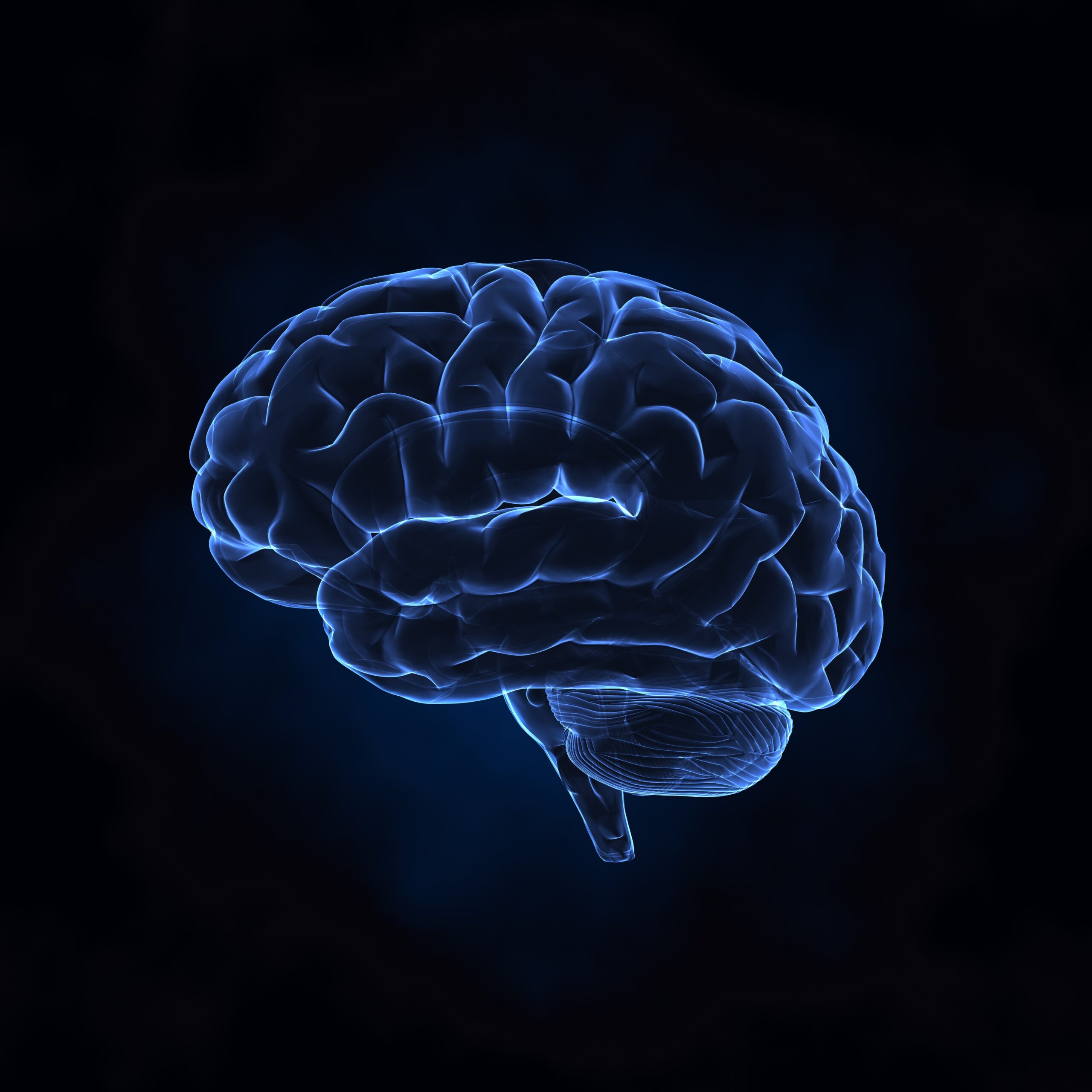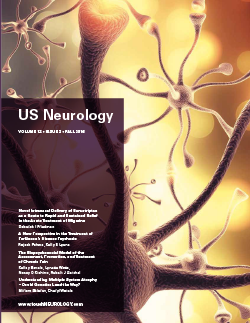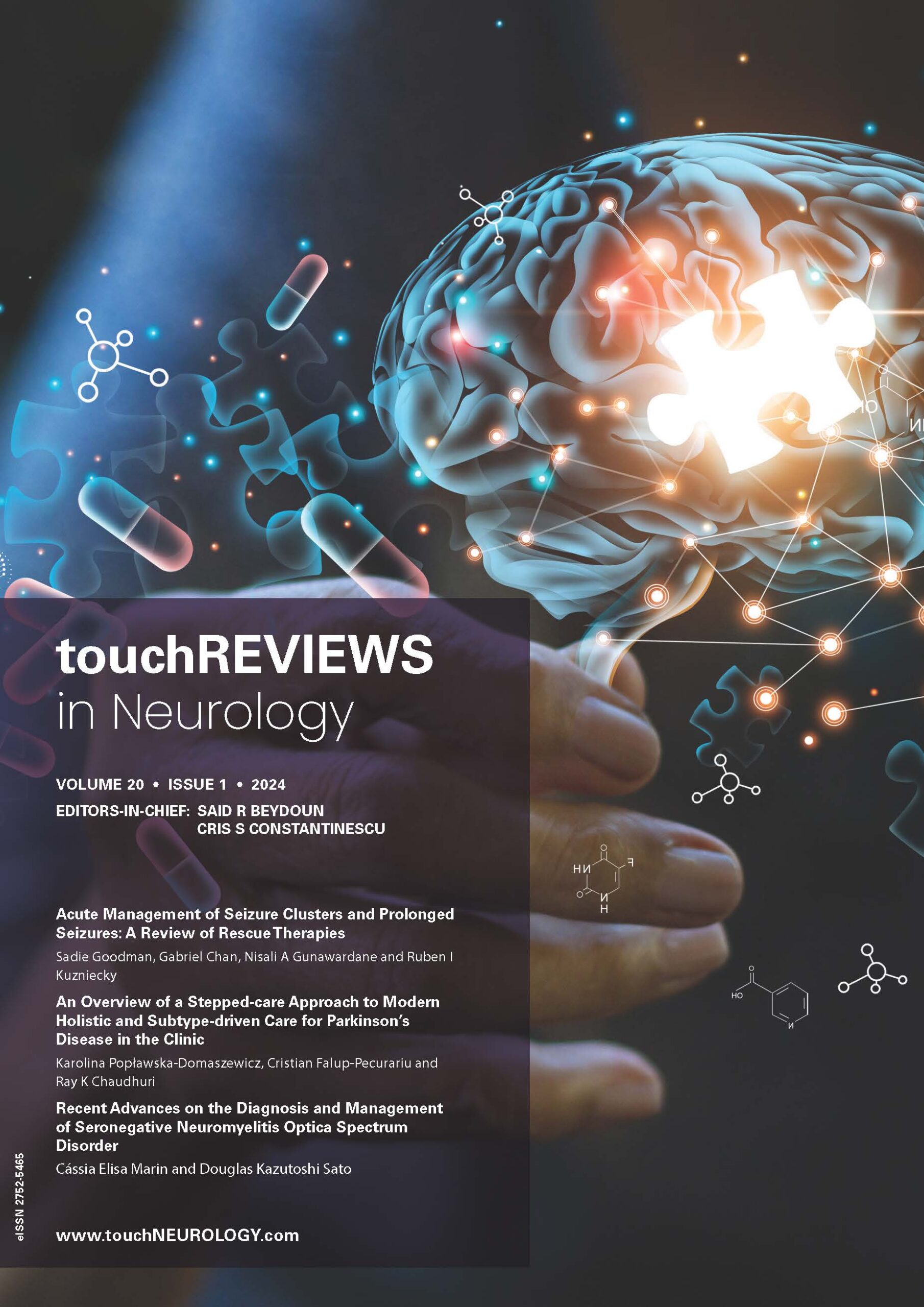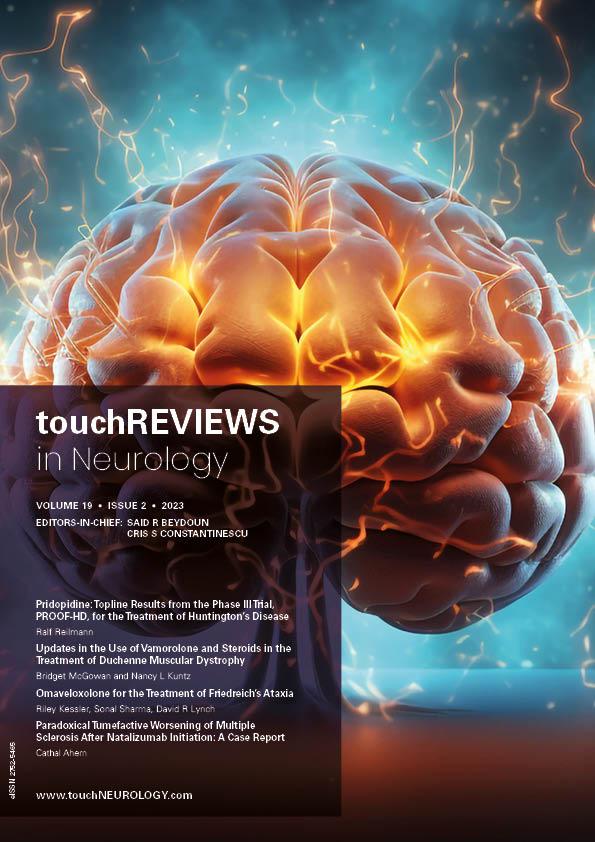US NEUROLOGY – VOLUME 12 ISSUE 2 – FALL 2016
Welcome to the Fall edition of US Neurology. This edition is introduced by Stuart Isaacson, from our Editorial Board. The journal begins with a timely editorial from Rosalind Kalb, who highlights the need for integrated care in multiple sclerosis (MS) and introduces the National MS Society’s new Wellness Discussion Guide. This is nicely followed by editorials in neuromodulation and virtual reality for pain control.
A review by Deborah Friedman discusses intranasal delivery of sumatriptan for the treatment of migraine, and Rajesh Pahwa and Kelly E Lyons review the treatment of Parkinson’s disease psychosis. Further topical reviews cover the biopsychosocial model of chronic pain; temperature, blood pressure and glycemic management in ischemic stroke; and the genetics of multiple system atrophy. We hope you enjoy this edition of US Neurology, and these articles prove useful and interesting.
Welcome to the latest edition of US Neurology. This journal aims to review topical subjects in the field of neurology and invites discussion focused on these issues. Articles have been chosen for their evaluation of current practices and research and their discussion of future directions and innovations that directly affect neurologists and other practitioners involved […]
Editorials
For people living with multiple sclerosis (MS) to feel well and function optimally, we must embrace a comprehensive approach that integrates neurologic and primary care, psychosocial support and wellness strategies from disease onset, as well as specialty care as needed throughout the disease course. For families affected by MS to thrive and be well, adequate […]
Neuromodulation (peripheral nerve neurostimulation [PNS] and central neurostimulation [CNS]) is a new promising treatment for headache disorders. PNS includes occipital nerve stimulation (ONS), vagal nerve stimulation (VNS), and stimulation that targets the supraorbital and sphenopalatine ganglion (SPG) stimulation. CNS includes single pulse transcranial magnetic stimulation (sTMS). Occipital nerve stimulation Nociceptive inputs from dural and C-2 […]
Reviews
Chronic pain affects millions of people around the globe. Current consensus considers chronic pain as a disease that arises from maladaptive changes within the central nervous system. Chronic pain poses a huge impact on affected individuals, societies, and health care systems. Current available medications or other treatment strategies are still far from providing an optimal, […]
Migraine is a common and highly debilitating condition that has substantial social and economic burdens.1–4 The condition affects approximately 12% of people in the US and Europe and is most common in women and those aged 30–50 years.5,6 Migraine treatments offering varying degrees of efficacy and differing modes of action have been widely available for […]
Parkinson’s disease (PD) has been traditionally defined by the motor symptoms of bradykinesia, resting tremor, rigidity and postural instability;1 however, more recently, it has been recognized that neuropsychiatric symptoms such as psychosis, anxiety, depression, apathy, impulse control disorders and dementia are also often present in PD and can significantly impact quality of life of patients […]
Chronic pain is a widespread, debilitating condition shared by millions worldwide. In 2015, more than 25 million Americans reported suffering from consistent daily pain.1 The Center for Disease Control (CDC) reported 15.6% of American adults experience consistent headaches or migraines, 29% have consistent low back pain, and 14.9% suffer consistent neck pain. With pain conditions […]
Currently there is a tremendous amount of research interest in acute reperfusion therapy for patients suffering from acute ischemic stroke. However, other aspects of patient care in acute and subacute stroke are typically considered routine and thus have received less attention. The present guidelines emphasize medical management during the first 24–48 hours after infarction, but […]
Multiple system atrophy (MSA) is a is an adult-onset, sporadic, progressive neurodegenerative disease characterized by a varying combination of parkinsonism, cerebellar ataxia, autonomic failure, and corticospinal dysfunction. Patients either have a predominance of parkinsonian symptoms (MSA-P) such that they are often misdiagnosed with Parkinson’s disease, or a predominance of cerebellar ataxia (MSA-C). Onset is usually […]
European Neurological Review Highlights
Children with epilepsy rarely suffer the condition in isolation. Cognitive, behavioural and psychiatric issues, which manifest as attention deficit hyperactivity disorder (ADHD), intellectual disability (ID), autism spectrum disorder (ASD), depression, unstable mood, and suicidality, are reported in 11–40% of those affected.1–4These diverse comorbidities, which complicate the care and outcome of children, are often as much […]
About 20% of all brain infarcts are caused by atherothrombotic macroangiopathy.1,2 The prevalence of atherosclerotic carotid disease increases with age. Epidemiological data show a prevalence of 3.1% for men and 0.9% for women in individuals with ≥70% North American Symptomatic Carotid Endarterectomy Trial (NASCET) criteria carotid stenosis who were 80 years or older. For ≥50% […]
Parkinson’s disease (PD) is a debilitating, progressive and costly neurodegenerative disease that affects over one million people annually in the US.1 The four cardinal features of PD are well recognised, namely: tremor at rest, rigidity, bradykinesia and postural instability. Additionally, individuals with PD commonly develop non-motor symptoms such as autonomic dysfunction (orthostatic hypotension, and bowel […]

Trending Topic
Parkinson’s disease (PD) is a complex neurodegenerative condition that predominantly affects older people, with a rising prevalence worldwide.1,2 There are many on-going challenges and unmet needs in PD: difficulties in making an accurate diagnosis (particularly in the early stages of the disease), troubling side effects associated with the available pharmacological treatments, a lack of effective disease-modifying therapies […]
Journal Archive
touchREVIEWS in Neurology is a peer-reviewed, free-to-access, bi-annual neurology journal comprising review articles, case reports, practice guides, theoretical discussions, and original research. It features balanced and comprehensive articles written by leading authorities, addressing the most important and salient developments in the field of neurology.
Latest articles videos and clinical updates - straight to your inbox
Log into your Touch Account
Earn and track your CME credits on the go, save articles for later, and follow the latest congress coverage.
Register now for FREE Access
Register for free to hear about the latest expert-led education, peer-reviewed articles, conference highlights, and innovative CME activities.
Sign up with an Email
Or use a Social Account.
This Functionality is for
Members Only
Explore the latest in medical education and stay current in your field. Create a free account to track your learning.

















